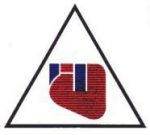Ann Cardiol Angeiol (Paris). 2017 Nov;66(5):275-282. doi: 10.1016/j.ancard.2017.09.003. Epub 2017 Oct 16.
Abstract
BACKGROUND:
Carotid atherosclerosis is a powerful predictive factor of vascular risk at the individual patient level. Ultrasonography is a reference technique for the evaluation of this condition. However, its use in common practice remains difficult due to a lack of standardization and inter-operator variability. We present a new and simple technique for the assessment of carotid atherosclerosis; and evaluate the ability of vascular neurologists to obtain results consistent with those of an expert in vascular ultrasound.
MATERIAL AND METHODS:
The TIMMA scale is an acronym for the five classes of carotid atherosclerosis in French, VIMMA in English: very important, important, moderate, minimal and absent. Combined, the first two classes make up the group « significant atheroma » and the last three classes make up the group « no significant atheroma ». This scale was evaluated in 38 patients (76 carotid arteries) suffering from ischemic stroke or transient ischemic attack by five operators who are competent in carotid echocardiography: one TIMMA-trained (40 hours of training) vascular neurologist physician (VNP), three VNPs informed on the measurement method (1 hour of information) and one specialized vascular physician (SVP) who was considered to be the reference examiner. We evaluated the concordance between the VNPs and the SVP in classifying patients, firstly into the significant or not atheroma group and, secondly, into the five TIMMA classes.
RESULTS:
The evaluation of the two-group clustering scale found a concordance between the informed VNPs and the SVP on 76 carotid arteries of 86% (kappa=0.7) and between the trained VNP and the SVP on 58 carotid arteries of 90% (kappa=0.8). The positive and negative predictive values for significant atheroma diagnosis were 100% and 81%, respectively, for the informed VNPs, and 100% and 80% for the trained VNP. The evaluation of the Five-Class Scale showed a concordance between the informed VNPs and the SVP of 46% (kappa=0.3), and between the trained VNP and the SVP of 74% (kappa=0.7).
CONCLUSION:
TIMMA allows VNPs who are competent in carotid ultrasonography to reproducibly identify subjects with significant carotid atheroma. The contribution of this scale to the determination of cardiovascular risk should be evaluated.
Copyright © 2017 Elsevier Masson SAS. All rights reserved.
KEYWORDS:
Accident vasculaire cérébral ischémique; Atheroma; Athérome; Carotid plaque; Carotid ultrasonography; Inter-observer reproducibility; Ischaemic stroke; Plaque; Reproductibilité inter-observateur; Échographie carotidienne
- PMID: 29050738
- DOI: 10.1016/j.ancard.2017.09.003

Leave a Reply